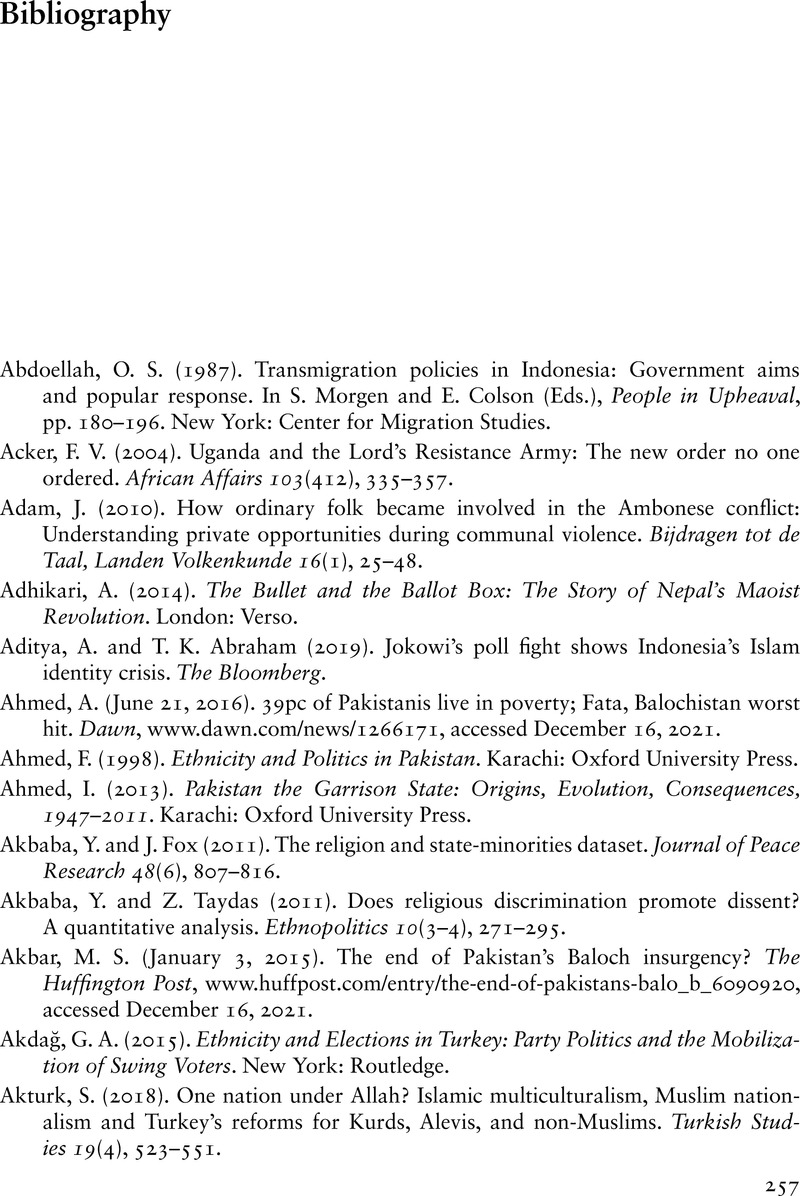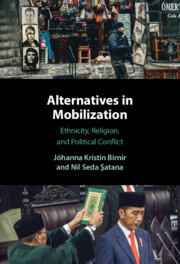Book contents
- Frontmatter
- Dedication
- Contents
- Figures
- Tables
- Acknowledgments
- 1 Introduction
- 2 Demography of Identity in Political Conflict
- 3 The Theory: Alternatives in Mobilization
- 4 Testing the Challenger’s Winning Coalition Hypothesis on Mobilization of Religion in Ethnic Civil War
- 5 The Internal Validity of the Challenger’s Winning Coalition Hypothesis
- 6 The Challenger’s Winning Coalition in Indonesia’s Electoral Politics
- 7 Conclusion
- Appendix A AMAR Groups and the A-Religion Data Set
- Appendix B Formal Representation of the Theory of Alternatives in Mobilization
- Appendix C Transformation of RELAC Data to Group Level to Match with the A-Religion Data Set
- Bibliography
- Index
- References
Bibliography
Published online by Cambridge University Press: 05 May 2022
- Frontmatter
- Dedication
- Contents
- Figures
- Tables
- Acknowledgments
- 1 Introduction
- 2 Demography of Identity in Political Conflict
- 3 The Theory: Alternatives in Mobilization
- 4 Testing the Challenger’s Winning Coalition Hypothesis on Mobilization of Religion in Ethnic Civil War
- 5 The Internal Validity of the Challenger’s Winning Coalition Hypothesis
- 6 The Challenger’s Winning Coalition in Indonesia’s Electoral Politics
- 7 Conclusion
- Appendix A AMAR Groups and the A-Religion Data Set
- Appendix B Formal Representation of the Theory of Alternatives in Mobilization
- Appendix C Transformation of RELAC Data to Group Level to Match with the A-Religion Data Set
- Bibliography
- Index
- References
Summary

- Type
- Chapter
- Information
- Alternatives in MobilizationEthnicity, Religion, and Political Conflict, pp. 257 - 286Publisher: Cambridge University PressPrint publication year: 2022



